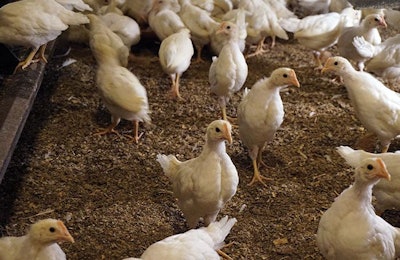
As world egg consumption rises, egg production does as well, reaching nearly 74 million metric tons in 2016, an increase of 18 percent from 10 years prior based on the most recent estimates from FAOSTAT (Figure 1). The top contributing companies to egg production around the world remain China, the U.S., India and Mexico (Figure 2), where producers are all facing pressure to convert their operations to cage free. China, by far the top producer, will have produced 530 billion eggs. For No. 2 egg producer, the U.S., egg production also continues to trend upward over the last few years after stabilizing from avian influenza. The U.S. will produce 8,808 million dozen eggs in 2017, 8,963 million dozen in 2018 and 9,130 million dozen in 2019 on projections from the U.S. Department of Agriculture (USDA) (Table 1).
With a rise in global egg and poultry meat production has come a doubling in the number of chickens worldwide over the last nearly two decades, from nearly 11 billion in 1990 to near 23 billion in 2016, according to the latest data from FAOSTAT (Figure 3).
US egg production climbing modestly
After coming back from avian influenza challenges and now being faced with pressure to spend money to convert to cage-free production, egg production has been trending up slowly going into 2018 in the U.S., rising 22.9 million eggs over the past decade since 2007 and 1,219 million dozen eggs during that period according to USDA (Figure 4). With this has also come growth in the number of laying hens in the U.S. USDA projects the number of laying hens will reach almost 374.3 million in 2017 compared to 346.6 million in 2007 and almost 333.6 million in 2000 (Figure 5).
State of egg production in the rest of the world
Egg production growth is expected to remain steady or modestly increase in major markets around the world, as well.
In the European Union, the European Commission projects egg production to rise modestly over the next decade from 7.7 million metric tons in 2016 to 8.224 in 2026 (Figure 6).
In India, egg production is also trending upward, from 27.2 billion eggs in 1996 to 46.2 billion in 2006 to a three-decade high of 82.9 billion eggs in 2016, according to India’s Ministry of Agriculture and Farmers Welfare (Figure 7). This can partially be attributed to better production efficiencies and a growing economy.
In world-leader China, the trend of egg production has continued over the decades. Recent data from the National Bureau of Statistics of China shows the historical direction of egg production in the country, from 21.8 million metric tons in 2000 to 27.7 million metric tons in 2010, increasing 27 percent over that decade.

















